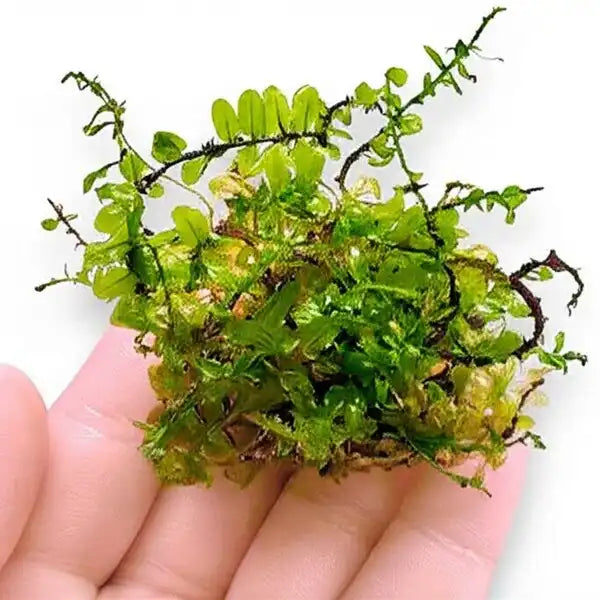
Plagiomnium sp Butterfly Moss - Terrarium Moss
Selling size: Last Image | Secure Packing | Free Shipping
Plagiomnium sp Butterfly Moss, also known as Butterfly Moss, is a unique and sought-after moss often used in aquariums and terrariums due to its distinctive appearance.
Here's a comprehensive guide to Plagiomnium sp Butterfly Moss's care:
1. Lighting Requirements:
Moderate to High Indirect Light: This moss thrives in moderate to high indirect light. For optimal growth and to maintain its vibrant green color, full-spectrum LED grow lights are highly beneficial.
Avoid Direct Sunlight: Prolonged exposure to direct sunlight can cause the moss to dry out, turn brown, and potentially die.
2. Humidity Watering (for Terrariums):
High Humidity: Plagiomnium moss prefers high humidity, ideally between 70-90%.
Regular Misting: It's crucial to keep the moss consistently moist through regular misting.
Water Quality: Use reverse osmosis (RO), distilled, or dechlorinated water. Tap water, especially if hard, can lead to mineral buildup, which can cause browning or thinning of the moss.
3. Substrate Placement:
Moist, Well-Draining Substrates: This moss does well on substrates that retain moisture but also drain well. Good options include sphagnum moss, coconut fiber, or bioactive soil.
Attachment Capabilities: Unlike many other mosses, Butterfly Moss develops distinctive "moss roots" (rhizoids) that appear as brown spots along its stems. These rhizoids allow it to attach strongly to hardscape elements like logs, rocks, and even the substrate. This makes it an excellent choice for creating a lush, carpet-like formation or for attaching to vertical surfaces.
Versatile Placement: It can be placed in the midground for a striking focal point or in the foreground where it can creep along the substrate.
4. Temperature Range:
Ideal Range: Plagiomnium moss prefers temperatures between 60-80°F (15-27°C).
Avoid Extremes: While it can tolerate slight fluctuations, avoid exposing it to extreme heat or cold, as this can be damaging. For aquariums, temperatures should generally be kept below 28°C (82°F).
5. Growth Maintenance:
Dense, Creeping Mats: This moss typically grows in dense, creeping mats.
Minimal Trimming: It requires minimal trimming. If it starts to dry out or appear less vibrant, increasing misting frequency or humidity can help restore its lush appearance.
No Fertilization Needed: Generally, no specific fertilization is needed for this moss.
CO2 (for Aquariums): While not strictly required, CO2 injection can be beneficial for faster and more robust growth in an aquarium setting.
6. Special Considerations for Aquariums:
Submerged Growth: Plagiomnium sp. 'Butterfly' is well-suited for submerged growth in aquariums.
Attachment: Its strong rhizoids make it excellent for attaching to driftwood or rocks using methods like plant glue (aquarium-safe) or fishing line until it establishes itself.
Water Flow: Good water circulation helps prevent stagnant areas and promotes healthy growth.
By following these guidelines, you can successfully cultivate Plagiomnium sp Butterfly Moss in your terrarium or aquarium, enjoying its unique and beautiful appearance.

